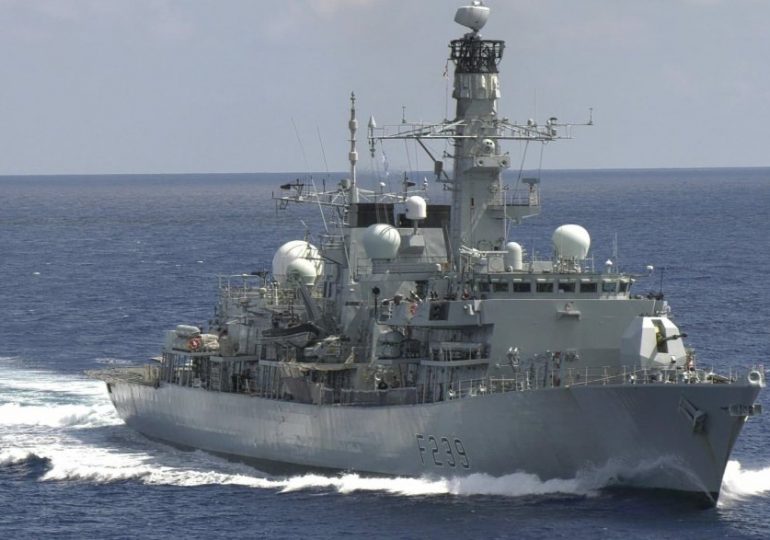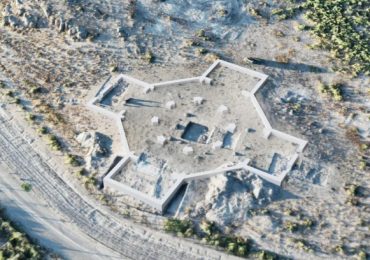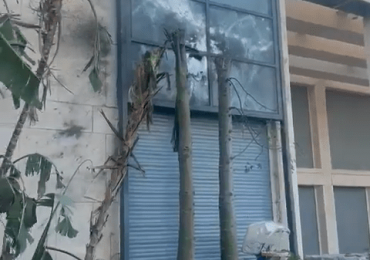BRITAIN is deploying HMS Richmond to the Red Sea as ongoing Houthi rebel attacks threaten to ignite an all-out war.
The move is set to bolster the Royal Navy’s presence in the region as the Iran-backed militia refuse to stand down in their mission to hold one of the world’s busiest shipping lanes hostage.
Refer to CaptionHMS Richmond set sail on Friday and is on route to bolster UK’s presence in the Red Sea[/caption]
The Type 23 frigate is pictured firing a Harpoon missile in during drills in 2016
The Iran-backed Houthi rebels have attacked dozens of vessels in the region in retaliation for Israel’s offensive inside GazaRex
The Type 23 frigate set sail from Plymouth on Friday armed with 32 Sea Captor missiles and a Wildcat helicopter.
HMS Richmond will join the destroyer HMS Diamond, frigate HMS Lancaster, a squadron of three mine hunting vessels HMS Bangor, HMS Chiddingfold and HMS Middleton and the support ship RFA Cardigan Bay.
A defence source told The Sun that HMS Richmond would allow other vessels to rotate through ports without tweaking the Royal Navy presence.
In a statement released today, Defence Secretary Grant Shapps called the situation “extremely serious”.
“The United Kingdom and our international partners condemn the illegal and unjustified attacks on commercial vessels in the Red Sea by Houthi militants.
“These attacks, which increased 500% from November to December, risk innocent lives, exacerbate the humanitarian suffering in Yemen, threaten regional security and harm the global economy.
“Our message is clear, we call for the Iranian-backed Houthi to immediately cease these illegal attacks.”
He warned: “The Houthis will bear the responsibility of the consequences should they continue to threaten lives and commercial shipping in these critical waterways.”
Shapps later sought to clarify that this is not an “escalation”, but part of a rotation of one of two Royal Navy warships already out on patrol in the tension-heavy waters.
It is unclear whether either the HMS Diamond or the HMS Lancaster will be replaced.
It follows weeks of drone and missile attacks by the Houthis that has put £1trillion worth of global trade at risk and sent shipping prices soaring by 170 per cent.
The militia group, which controls large swaths of Yemen, claim to be targeting vessels with links to Israel in retaliation for their devastating offensive inside Gaza.
However, there have been frequent attacks on commercial vessels with little or no link to Israel – forcing global sea traffic to halt operations in the region and sail around Africa.
Shapps added that “planning is underway for a range of scenarios” but currently “no decisions” have been made as he pursues diplomatic routes.
The UK is part of a US-led task force, Operation Prosperity Guardian, deployed to keep the peace in the Red Sea in a show of force to the Iranian terror proxy.
Sources said eight of the 20 ships attacked in the 30 days before Christmas were either UK-registered, had Brits in their crew or carried goods for the UK.
On New Year’s Eve, the first deadly clash between the US and the Houthis took place as US Navy choppers sank three militia boats.
The helicopters came to the rescue of a Maersk container vessel being fired upon by the rebels, sinking three Houthi ships and killing all onboard.
It marked the biggest confrontation between the US and the Houthis since the Israel-Hamas war broke out and tensions have continued to spiral into the New Year with fresh attacks.
The following day, Iran sent a destroyer bristling with missiles and guns into the centre of the chaos after the Houthis vowed the US would “bear the consequences” of their attack.
Under a barrage of rocket and drone attacks, major shipping firms, such as BP and Maersk, have diverted vessels away from The Bab el-Mandeb strait – also known as the “Gate of Tears.”
Ships attempting to navigate the 20-mile-wide gap are forced to sail dangerously close to the coast of Yemen, where increasingly emboldened Houthi rebels are waiting to strike.
Instead, they are forced to sail thousands of miles further round the Horn of Africa – adding up to two weeks to delivery times and driving up global prices.
Over the weekend, the number of vessels passing through the Suez Canal fell to its lowest since the vital waterway was blocked by the Ever Given container ship in 2021.
As a result, container shipping is set to face a major crunch ahead of the Chinese New Year which begins February 10.
The coming weeks will be “very difficult” as trade volumes escalate. Philip Damas, Head of Supply Chain Advisors at Drewry Shipping, told Bloomberg.
“There is something of a panic in China now about the availability of capacity,” he said. “The next five weeks leading to Chinese New Year on February 10 are going to be very difficult for shippers and for shipping”.
ReutersThe moment before the Houthis attacked and seized the Galaxy Leader cargo ship in late November[/caption]
ReutersThree Houthi boats were sunk on New Year’s Eve in a deadly clash with US Navy choppers[/caption]
Iranian warship Alborz was deployed to the Red Sea on New Year’s day as tensions spike in the region
Leave a comment








